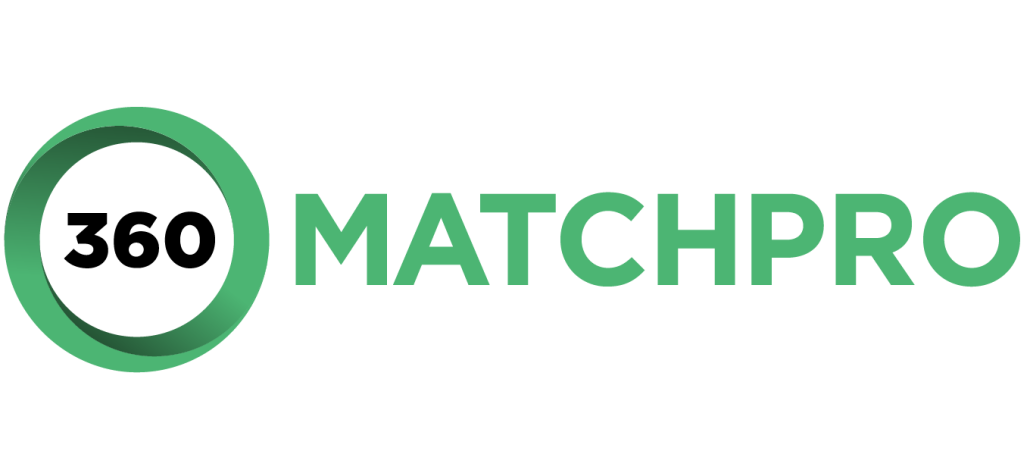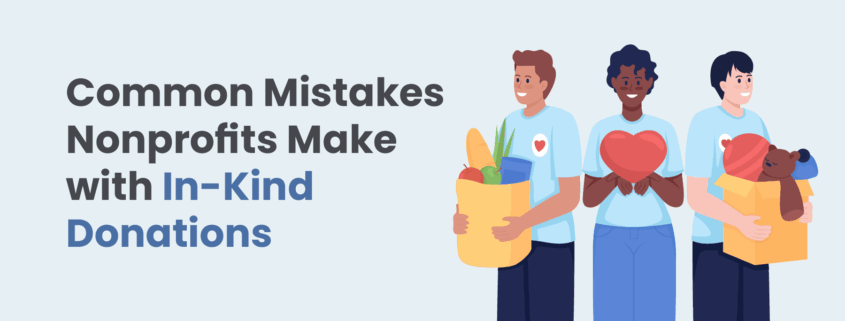Common Mistakes Nonprofits Make with In-Kind Donations
In-kind donations can be a game-changer for nonprofits. Whether it’s donated equipment, free professional services, or supplies for an event, these non-cash gifts can significantly reduce costs and expand impact. However, mismanagement of in-kind donations can lead to significant challenges.
In this article, we’ll explore the common mistakes nonprofits make with in-kind donations and provide actionable strategies to avoid them.
- Failing to Properly Value Donations
- Inadequate Documentation
- Not Acknowledging Donors Adequately
- Accepting Unnecessary or Unwanted Items
- Overlooking Corporate In-Kind Donation Programs
While in-kind donations can be a powerful resource for nonprofits, their potential can only be fully realized if managed properly. By understanding common pitfalls, organizations can ensure they are maximizing the impact of these non-cash gifts. Let’s begin!
Mistake #1: Failing to Value Donations Properly
Mistake #2: Inadequate Documentation
Inadequate documentation of in-kind donations is one of the most common pitfalls nonprofits face. While accepting donations, especially non-cash ones like goods and services, provides a substantial benefit to organizations, failing to maintain proper records can lead to significant problems. For financial transparency, compliance with IRS regulations, and effective stewardship, nonprofits must document every detail related to each in-kind donation.
Solution: The Importance of Thorough Documentation
To avoid this mistake, nonprofits should establish a system for thorough documentation that includes key details of every in-kind donation they receive. For the best results, each record should include the following information:
-
Date of Contribution: Accurate dating is critical. It helps track when donations were received and ensures that they are reported in the correct financial period. This also supports the donor’s tax deduction claims.
-
Detailed Description of Donated Items: Nonprofits should provide a clear and specific description of each item donated, including any distinguishing characteristics. This could be as simple as “5 laptop computers” or as detailed as “wooden dining table with 4 chairs in excellent condition.” Providing this level of detail helps avoid confusion, ensures the correct valuation, and prevents misunderstandings about the type and condition of the donation.
-
FMV + Determination Method: It’s essential to document both the the fair market value and how the FMV was determined for the donation. Whether the valuation was based on online pricing, retail comparisons, or a professional appraisal, this step ensures transparency in the financial reporting process. Documentation of FMV also protects the organization during audits or IRS reviews, demonstrating that the valuation was reasonable and well-supported.
-
Donor’s Contact Information: Nonprofits should keep accurate records of the donor’s contact details (name, address, phone number, and email) for several reasons. This includes the potential need to follow up for further information, send acknowledgment letters, or provide tax receipts. It also helps establish the legitimacy of the donation for future reference.
-
Intended Use of the Contribution: For transparency, nonprofits should also document the intended use of the in-kind contribution. This ensures that donations are applied to their intended purpose and helps align the organization’s reporting with the expectations of the donor.
Having a detailed in-kind donation log or donation tracking system in place is vital for maintaining proper documentation. It is also a best practice to keep digital records for easy access and retrieval, making the process more efficient and less prone to human error.
By committing to detailed, organized documentation of all in-kind donations, nonprofits can ensure they meet legal requirements, maintain transparency, and demonstrate the full value of these important contributions. This, in turn, builds trust with donors, fosters accountability, and sets the organization up for long-term success.
Mistake #3: Not Acknowledging Donors Adequately
Mistake #4: Accepting Unnecessary or Unwanted Items
Mistake #5: Overlooking Corporate In-Kind Donation Programs
Conclusion & Next Steps
By proactively addressing these common mistakes, nonprofits can enhance their operational efficiency, maintain donor trust, and ensure compliance with relevant regulations. Understanding the nuances of in-kind donations is essential for maximizing their potential and driving real impact in the community.
Simplify Your In-Kind Donation Strategy with Double the Donation
Maximizing the potential of in-kind donations doesn’t have to be overwhelming. With Double the Donation, you can easily navigate the world of corporate sponsorships and in-kind contributions. Our comprehensive database helps you identify companies eager to support your cause through in-kind gifts, sponsorships, and corporate grants.
Ready to transform your in-kind donation strategy? Request a demo today and see how we can help you make a difference.



